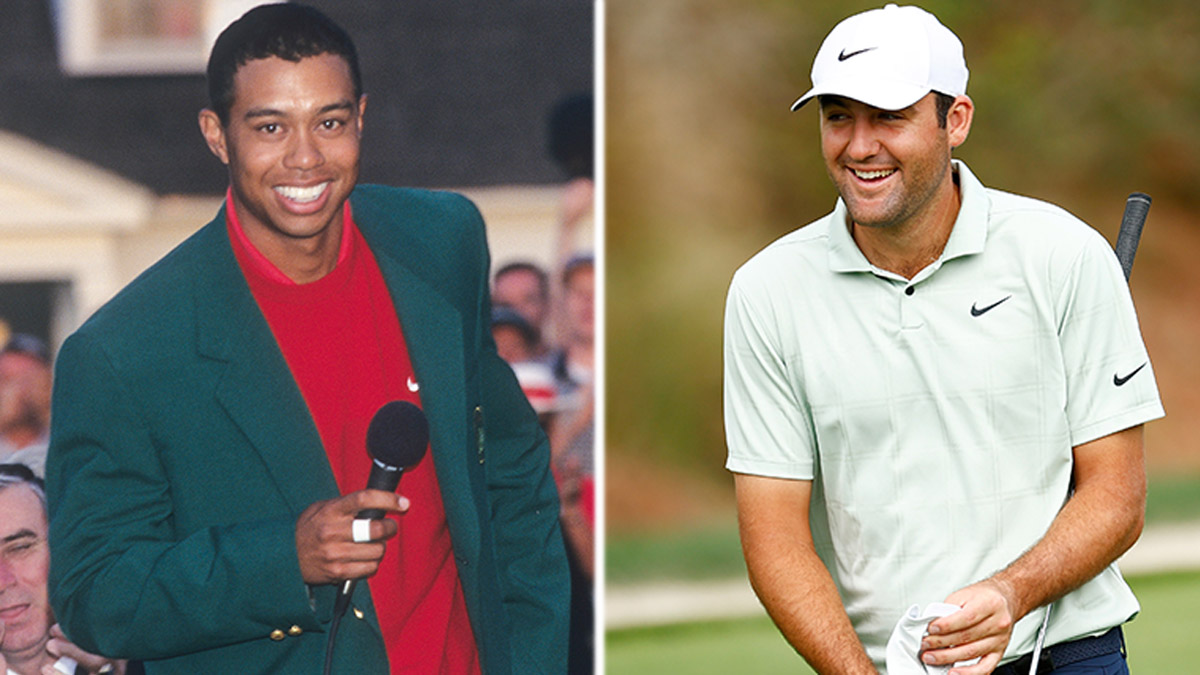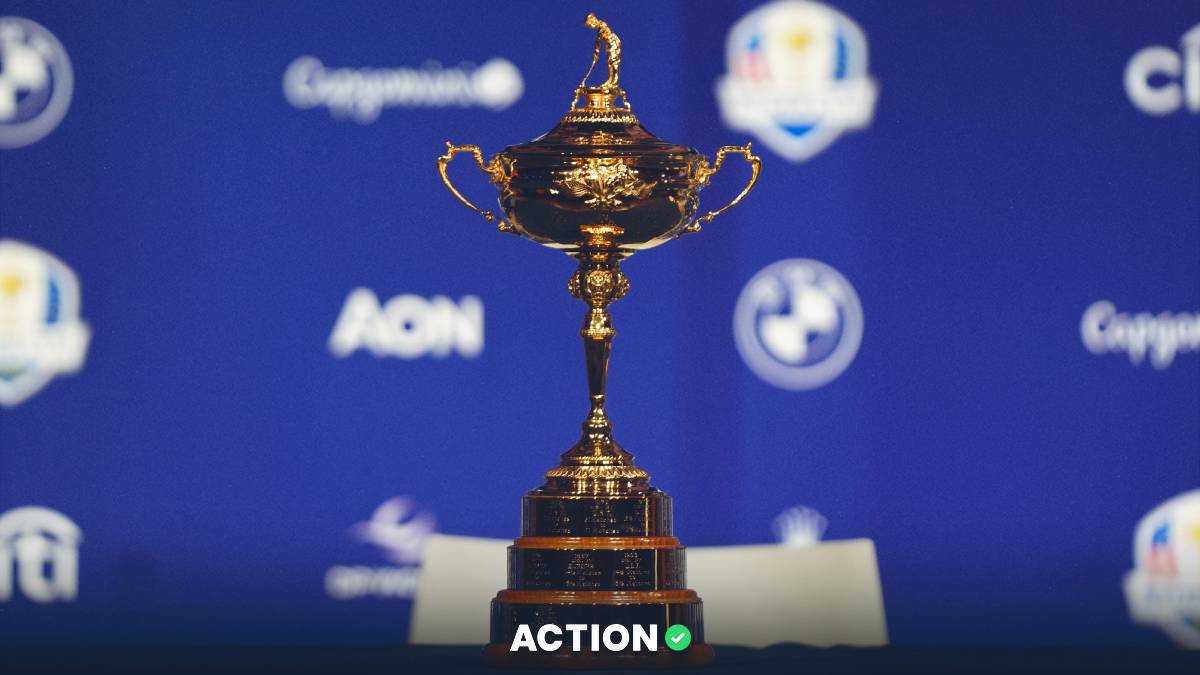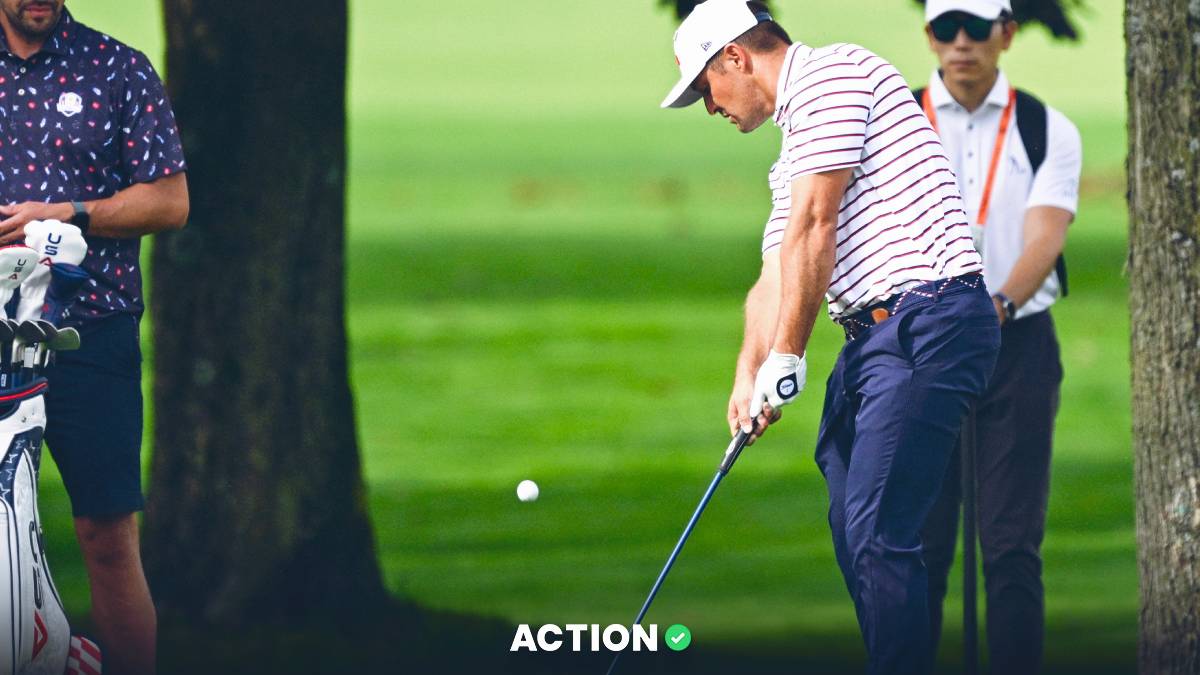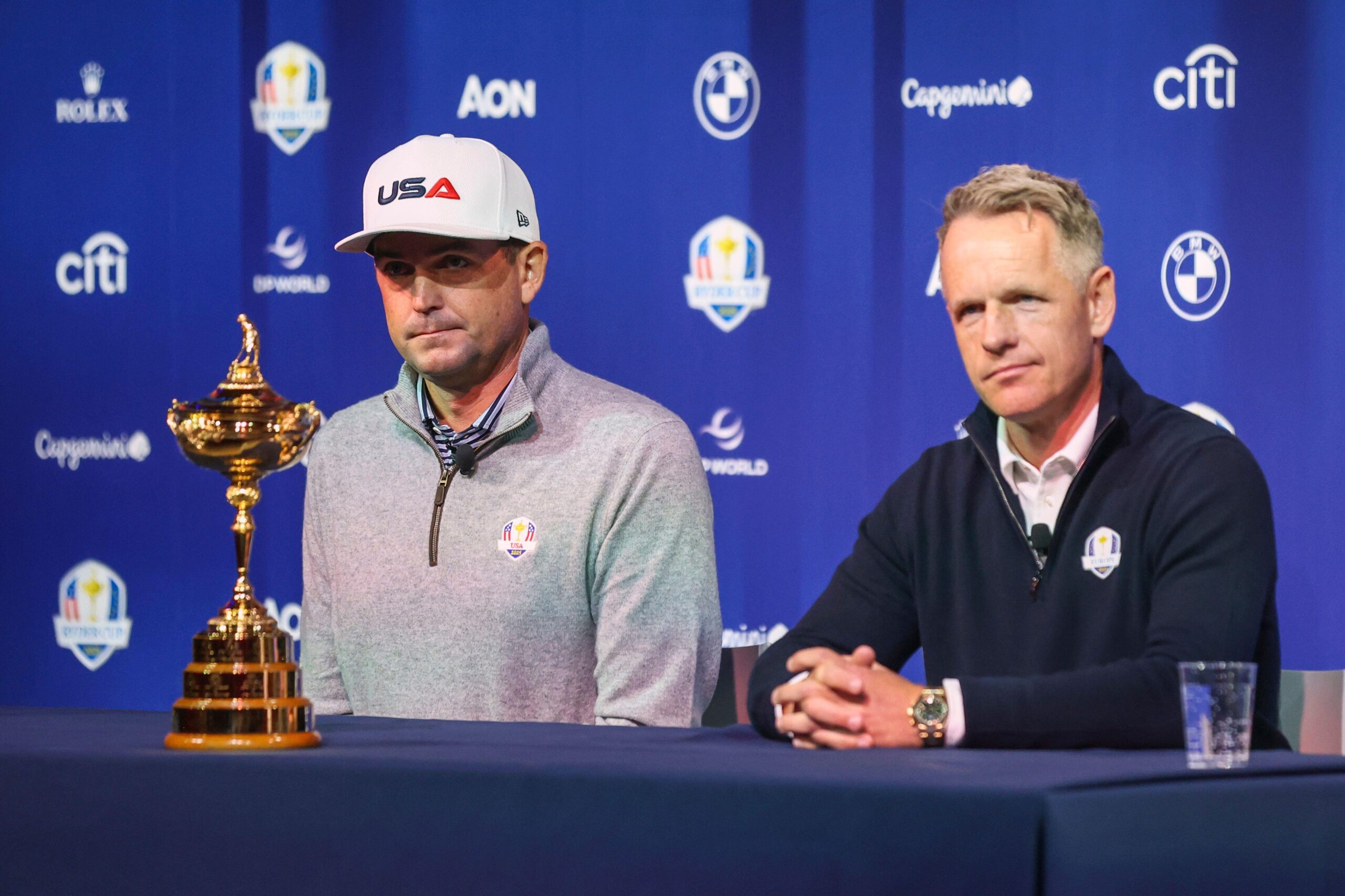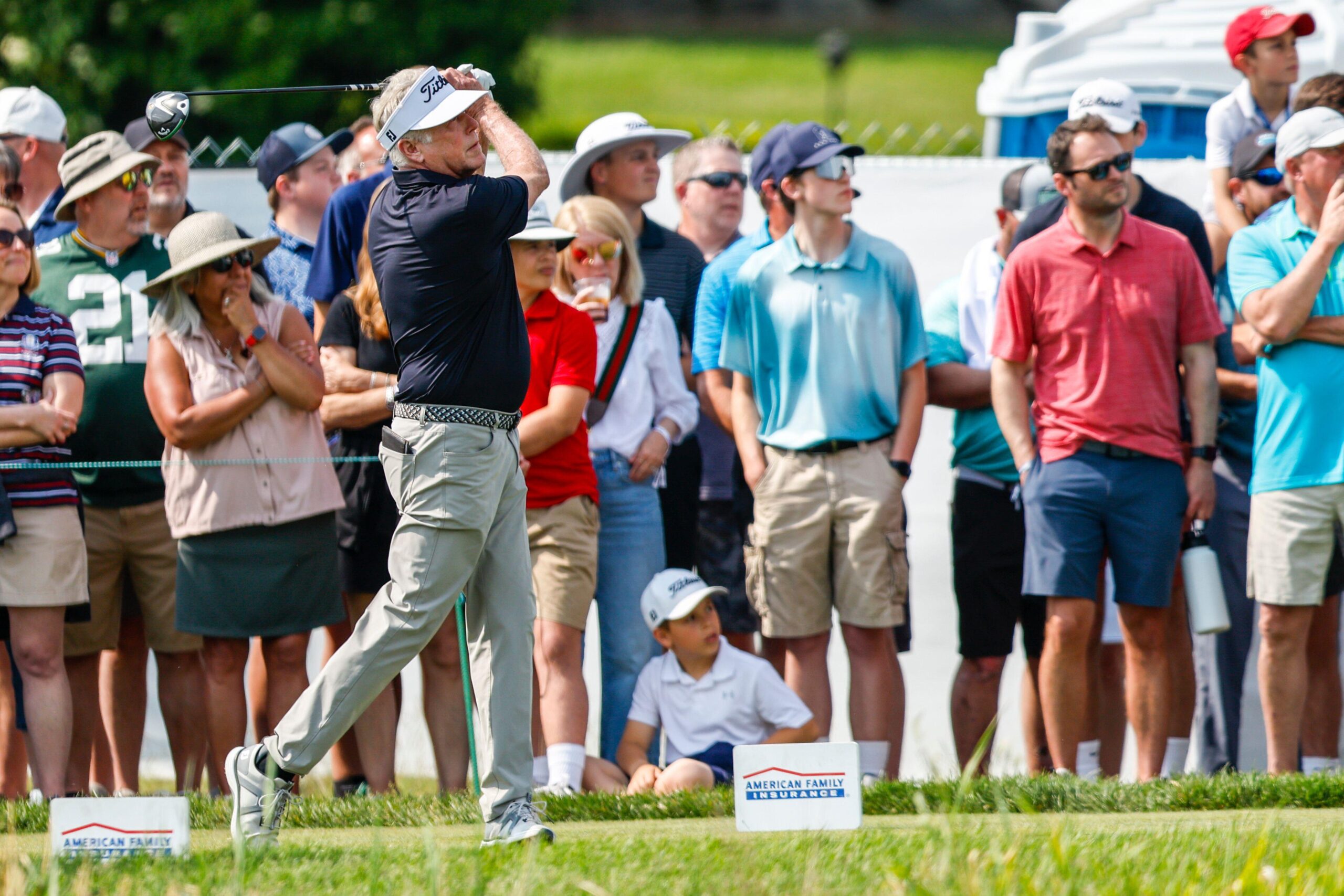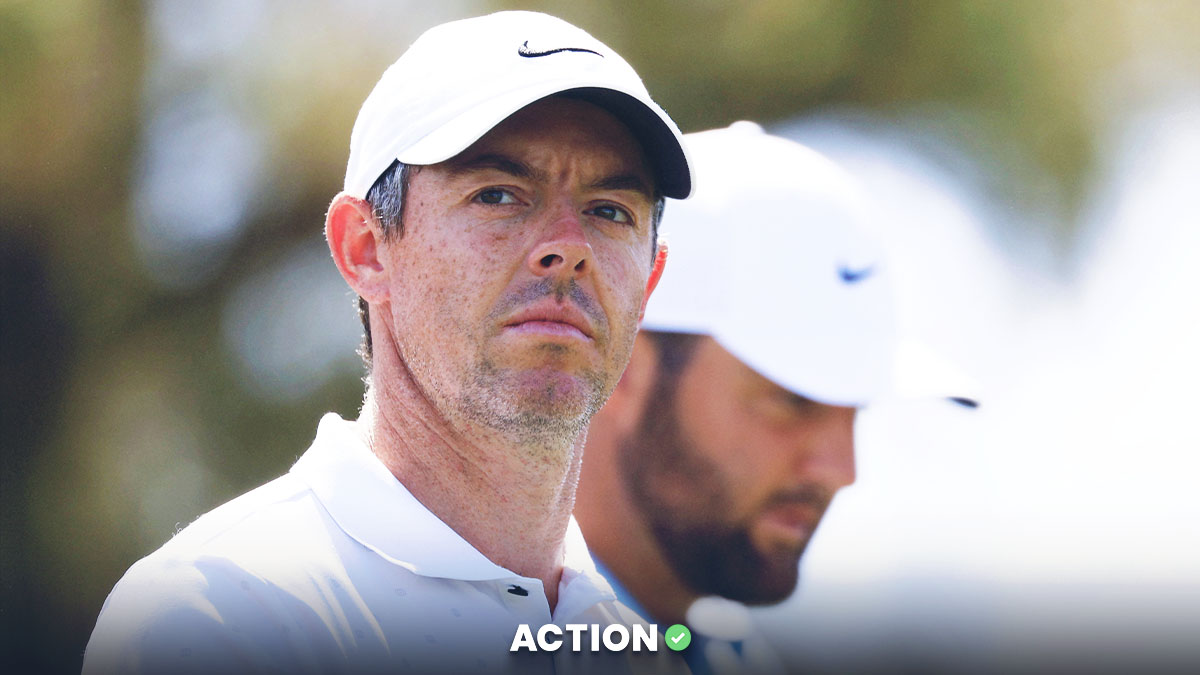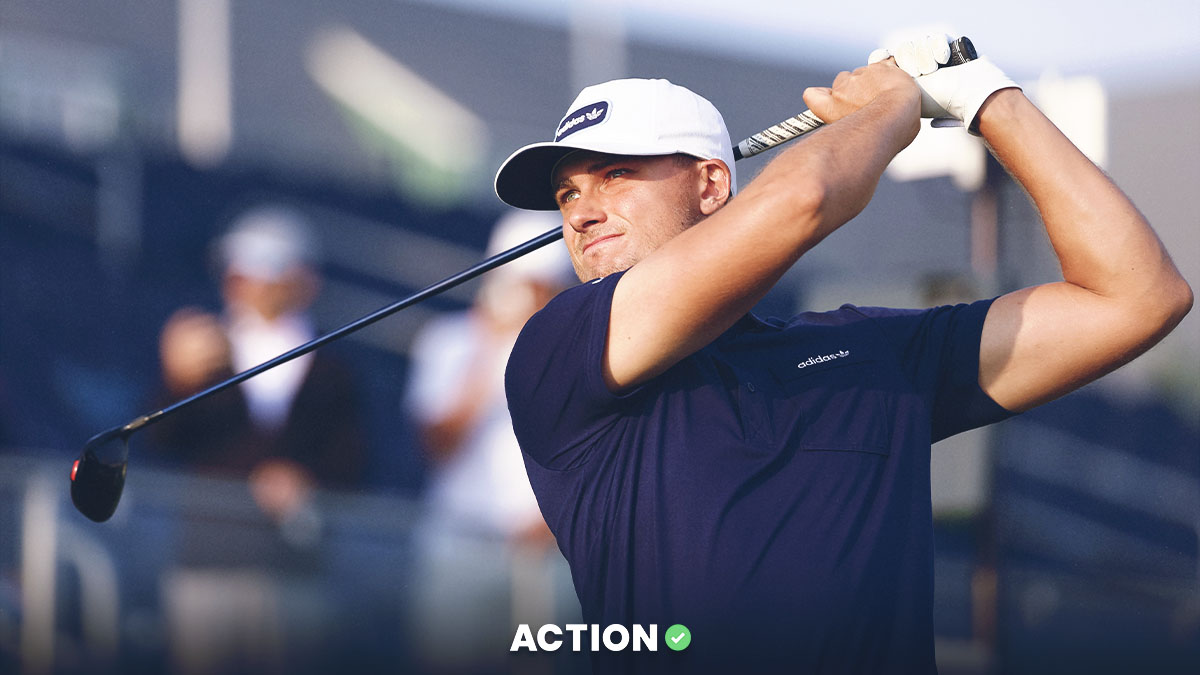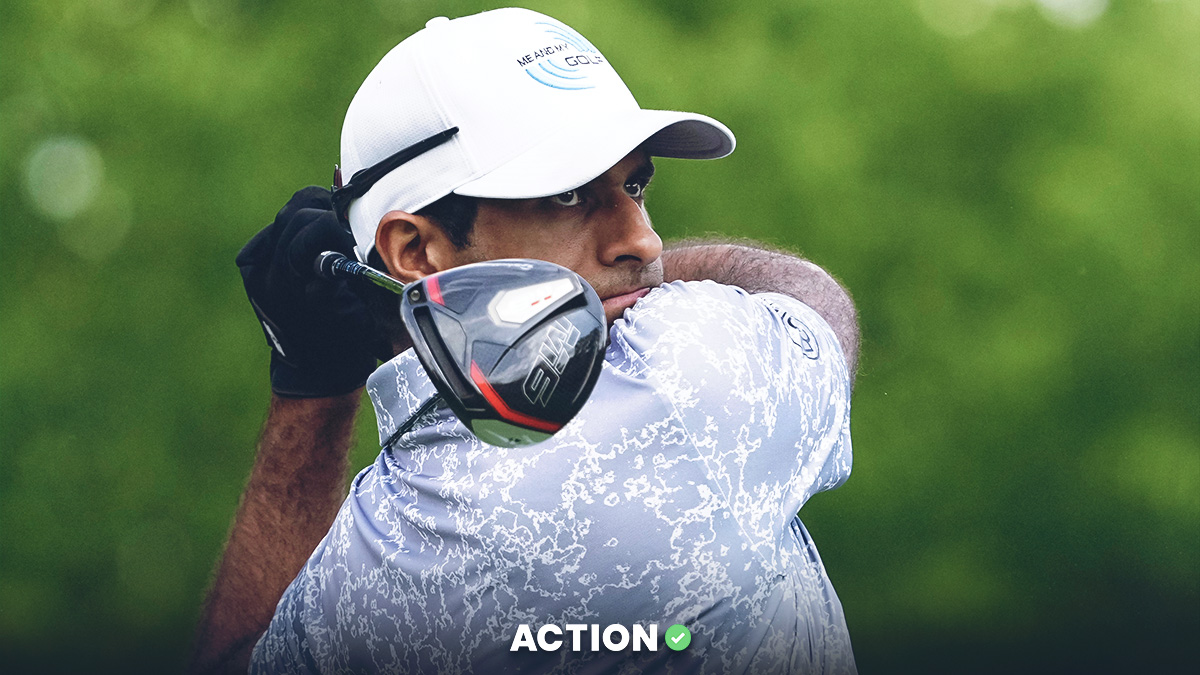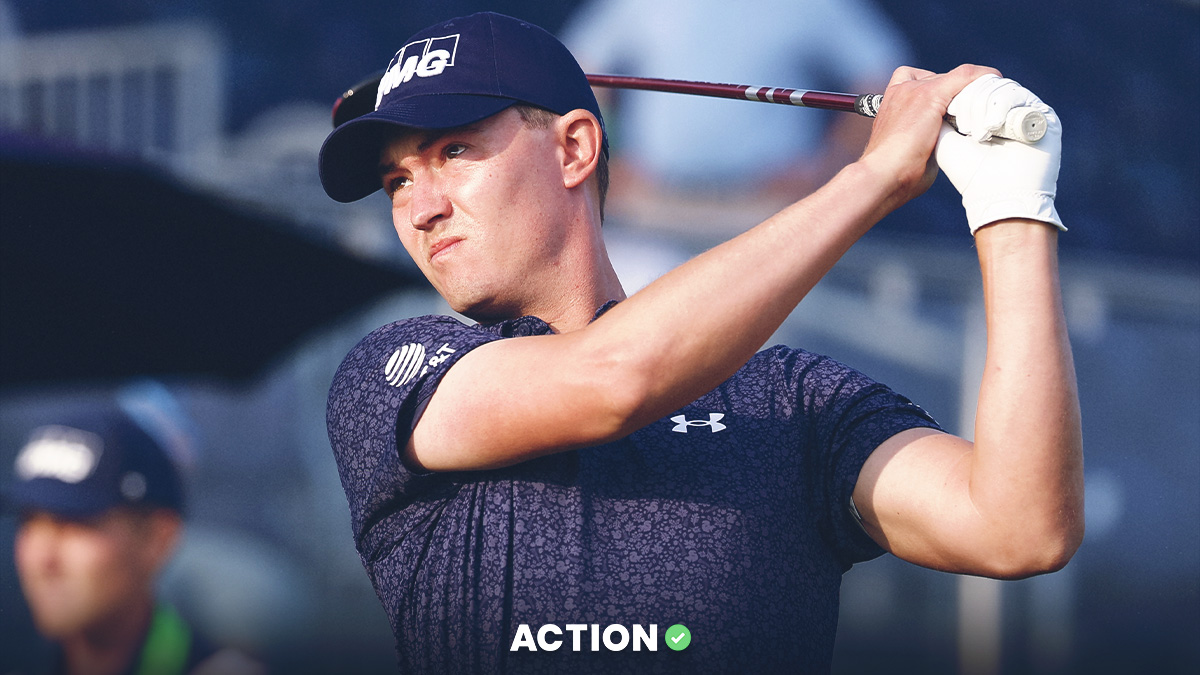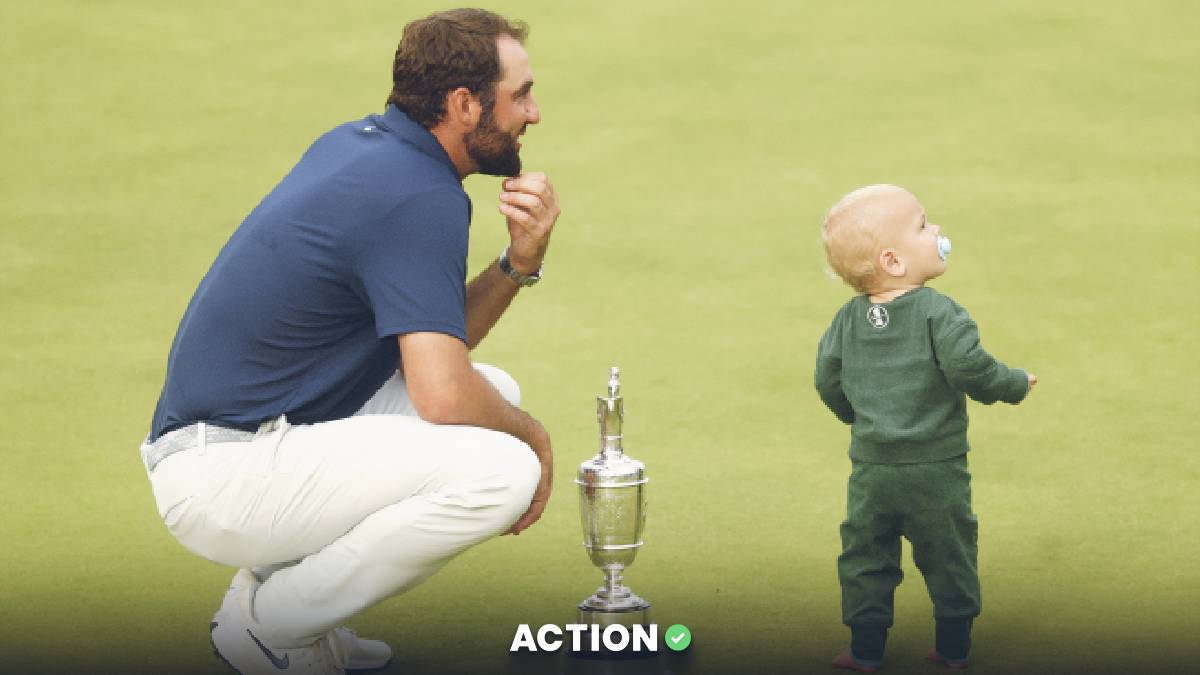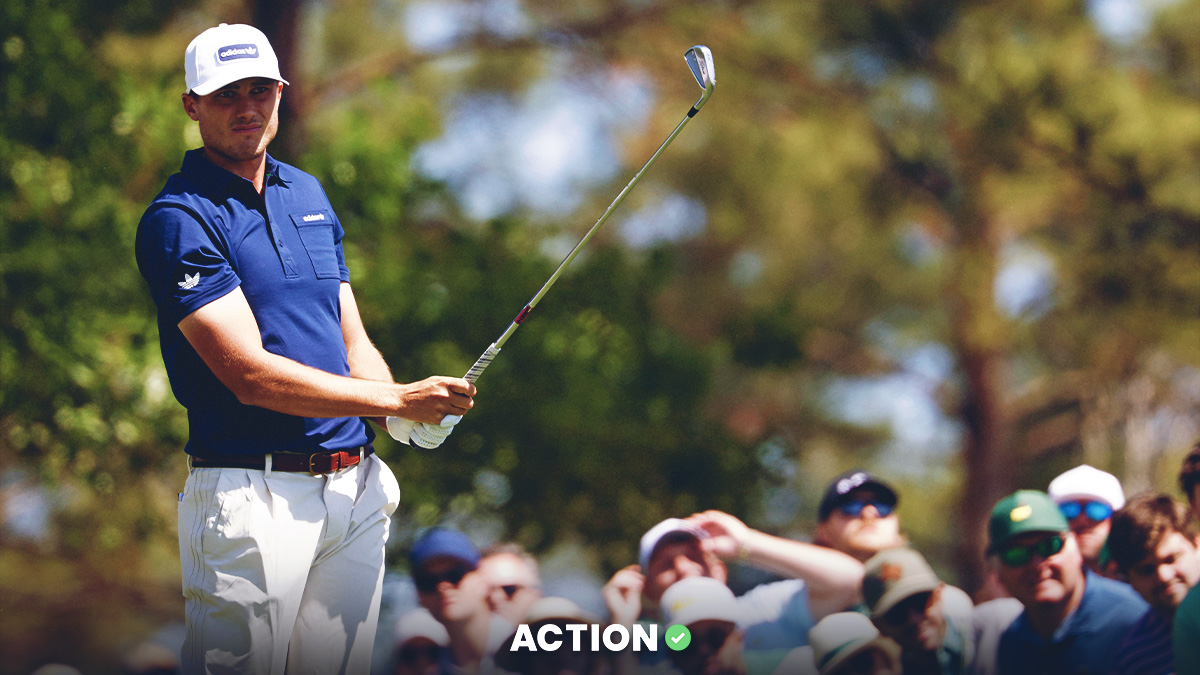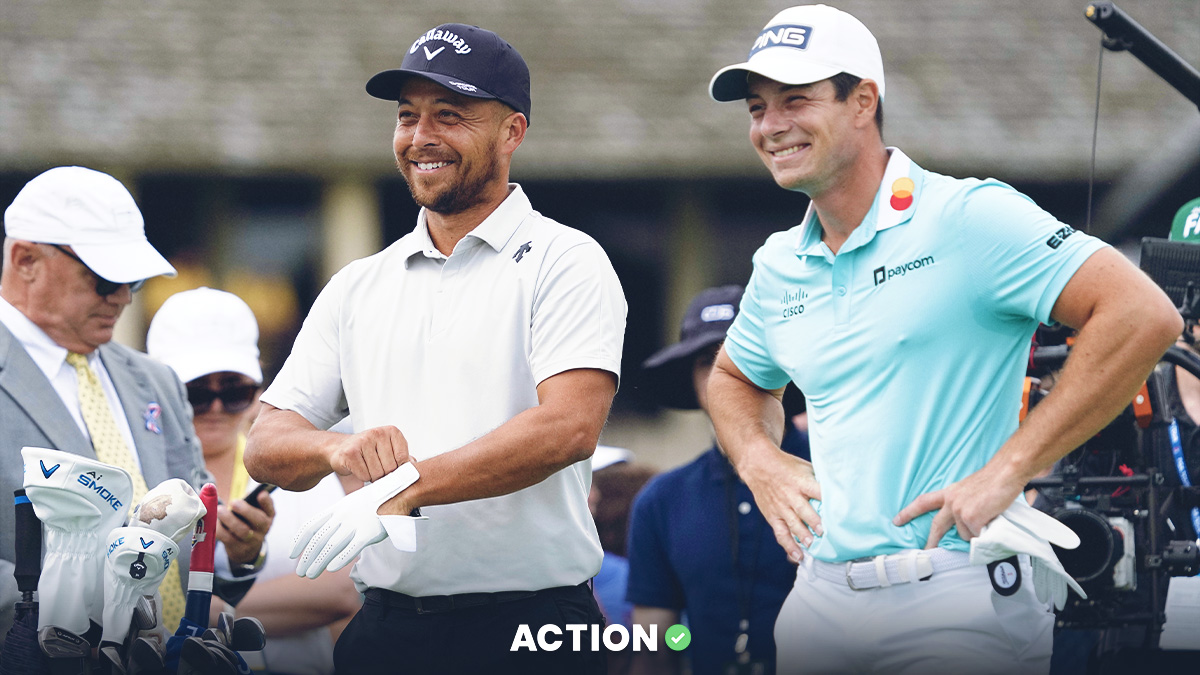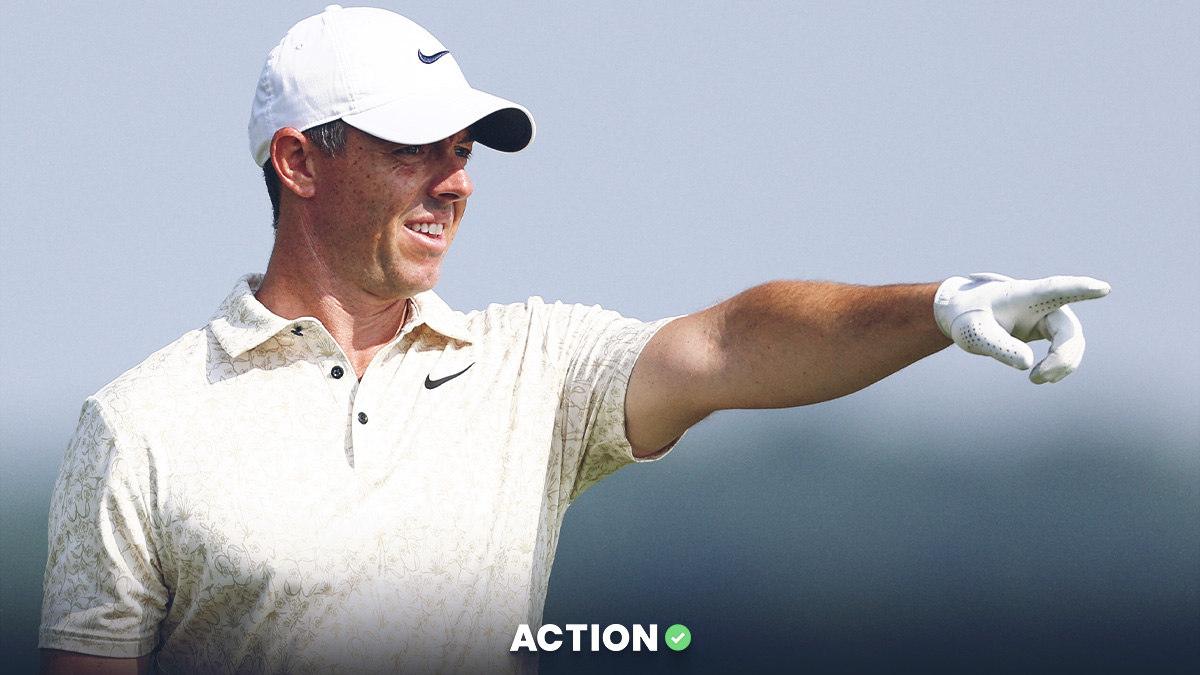Click arrow to expand 2022 Masters odds via BetMGM
2022 Masters Odds
| Golfer | Odds |
|---|---|
| Jon Rahm | +1100 |
| Justin Thomas | +1200 |
| Cameron Smith | +1400 |
| Dustin Johnson | +1600 |
| Scottie Scheffler | +1600 |
| Jordan Spieth | +1800 |
| Rory McIlroy | +1800 |
| Viktor Hovland | +1800 |
| Brooks Koepka | +2000 |
| Collin Morikawa | +2000 |
| Patrick Cantlay | +2000 |
| Xander Schauffele | +2000 |
| Will Zalatoris | +3300 |
| Bryson DeChambeau | +4000 |
| Daniel Berger | +4000 |
| Hideki Matsuyama | +4000 |
| Sam Burns | +4000 |
| Louis Oosthuizen | +4000 |
| Adam Scott | +5000 |
| Corey Conners | +5000 |
| Joaquin Niemann | +5000 |
| Paul Casey | +5000 |
| Shane Lowry | +5000 |
| Sungjae Im | +5000 |
| Tiger Woods | +5000 |
| Tyrrell Hatton | +5000 |
| Matt Fitzpatrick | +5000 |
| Patrick Reed | +6600 |
| Russell Henley | +6600 |
| Tommy Fleetwood | +6600 |
| Tony Finau | +6600 |
| Abraham Ancer | +6600 |
| Billy Horschel | +8000 |
| Bubba Watson | +8000 |
| Gary Woodland | +8000 |
| Justin Rose | +8000 |
| Marc Leishman | +8000 |
| Sergio Garcia | +8000 |
| Webb Simpson | +8000 |
| Seamus Power | +8000 |
| Luke List | +10000 |
| Max Homa | +10000 |
| Robert Macintyre | +10000 |
| Si Woo Kim | +10000 |
| Thomas Pieters | +10000 |
| Brian Harman | +12500 |
| Cameron Young | +12500 |
| Jason Kokrak | +12500 |
| Kevin Kisner | +12500 |
| Sepp Straka | +12500 |
| Talor Gooch | +12500 |
| Christiaan Bezuidenhout | +15000 |
| Francesco Molinari | +15000 |
| Harold Varner III | +15000 |
| Kevin Na | +15000 |
| Lee Westwood | +15000 |
| Matthew Wolff | +15000 |
| Tom Hoge | +15000 |
| Lucas Herbert | +15000 |
| Cameron Champ | +20000 |
| Danny Willett | +20000 |
| Erik van Rooyen | +20000 |
| J.J. Spaun | +20000 |
| K.H. Lee | +20000 |
| Ryan Palmer | +20000 |
| Cameron Davis | +25000 |
| Garrick Higgo | +25000 |
| Mackenzie Hughes | +25000 |
| Min Woo Lee | +25000 |
| Harry Higgs | +30000 |
| Keita Nakajima | +30000 |
| Lucas Glover | +30000 |
| Stewart Cink | +30000 |
| Zach Johnson | +30000 |
| Hudson Swafford | +35000 |
| Takumi Kanaya | +35000 |
| Charl Schwartzel | +40000 |
| Padraig Harrington | +40000 |
| Guido Migliozzi | +50000 |
| Bernhard Langer | +75000 |
| Austin Greaser | +100000 |
| Fred Couples | +100000 |
| James Piot | +100000 |
| Laird Shepherd | +100000 |
| Hagestad | +100000 |
| Vijay Singh | +100000 |
| Mike Weir | +150000 |
| Aaron Jarvis | +200000 |
| Jose Maria Olazabal | +250000 |
| Larry Mize | +500000 |
| Sandy Lyle | +500000 |
AUGUSTA, Ga. – Twenty-five years ago, golf changed forever.
This week in 1997, a spindly 21-year-old named Tiger Woods showed up at Augusta National Golf Club drowning in oversized polo shirts, his massive drives and towering iron shots still more myth than legend.
He was good, we knew that much. But good enough to win a Masters title at such a tender age? Nobody was. This was a tournament which required experience. A series of trial-and-error processes was required before such education could lead to success.
Instantly, Woods appeared overmatched. He opened with four bogeys and no birdies on the front-nine, making the turn in 4-over 40. It seemed just making the cut would be a longshot, let alone actually contending for the green jacket.
Ah, to be so naïve.
Woods followed that opening-nine total with a back-nine 30, then added scores of 66-65-69 in the final three rounds to win by a dozen strokes.
The game indeed changed — and the repercussions are still being seen.
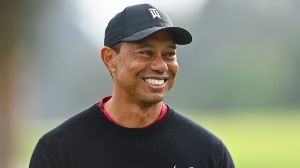
Last month, Scottie Scheffler outlasted his fellow contenders to win the Arnold Palmer Invitational. The victory culminated a subtle, yet seismic shift in the gradual evolution of the demographic representing golf’s most elite-status players.
With the victory, the 25-year-old Scheffler climbed into the top-five of the Official World Golf Ranking for the first time (he’s now No. 1) — and for the first time in the 36-year existence of the ranking, each of those top-five players was under the age of 30.
Granted, this development only lasted for one week — until Patrick Cantlay turned 30 on March 17 — but it serves to represent other benchmarks in a game trending younger at its highest level.
According to findings from Phil Allen of the Twenty First Group, just two weeks ago, the OWGR featured a top 10 with every player under the age of 33 for the first time in history, plus an average age of under 28, also for the first time.
This included Collin Morikawa (25), Viktor Hovland (24), Sam Burns (25) and Scheffler, but knowing the answers to such progression only leads to more questions.
Among the most prominent questions is also the simplest: Why?
Before we delve into potential theories behind a trend which will undoubtedly rear its head on this week’s Masters leaderboard, let’s first examine just how much this has changed over the years.
Dating back a quarter-century, the transformation has been as dramatic as it has been impactful.
Here are the ages for the top 10 in the OWGR entering the 1997 Masters:
OWGR Top 10 at 1997 Masters
- Greg Norman, 42
- Tom Lehman, 38
- Colin Montgomerie, 33
- Mark O’Meara, 40
- Ernie Els, 27
- Steve Elkington, 34
- Jumbo Ozaki, 50
- Nick Faldo, 39
- Phil Mickelson, 26
- Nick Price, 40
If golf was considered an “old-man sport” a generation ago, well, the numbers were certainly there to back it up.
The highest-ranked player was a couple of years into his 40s, one player had already reached 50 and only two players were still in their 20s.
(If you’re wondering about the whereabouts of Tiger Woods, who would win his first major championship that week at the age of 21, he was ranked 13th – a half-dozen spots behind Ozaki, 29 years his senior.)
The average age of the top-10 players that week was 36.9, a number nearly five years greater than any individual player in the top 10 right now.
This evolution took a palpable turn within the next half-decade. By the 2002 Masters, the game’s No. 1-ranked player was 16 years younger than in 1997.
OWGR Top 10 at 2002 Masters
- Tiger Woods, 26
- Phil Mickelson, 31
- Ernie Els, 32
- Retief Goosen, 33
- Sergio Garcia, 22
- David Duval, 30
- Vijay Singh, 39
- David Toms 35
- Chris DiMarco, 33
- Davis Love III, 37
There remained only a pair of 20-somethings in the top 10 that week, but gone were the 40- and 50-somethings who’d littered the elite level just a few years earlier.
The average age was now 31.8, more than five years younger than five years previously.
And it should come as no surprise that Woods’ long-standing isolation atop this list served as a major turning point moving forward. The erstwhile “old-man sport” started trending younger right before our eyes. Among those inspired by his dominance were those of the upcoming generation, who now viewed the game through a different prism than those of previous generations.
For a while, though, at least at the highest level, this progression was stagnant.
OWGR Top 10 at 2007 Masters
- Tiger Woods, 31
- Jim Furyk, 36
- Adam Scott, 26
- Phil Mickelson, 36
- Ernie Els, 37
- Henrik Stenson, 31
- Vijay Singh, 44
- Geoff Ogilvy, 29
- Retief Goosen, 38
- Padraig Harrington, 35
Once again, Tiger remained in the No. 1 position. Once again, there were only two players in their 20s. And once again, a bevy of players in their mid-30s were scattered throughout this list.
At this point, the average age of the top 10 was 34.3, the only time in these five-year intervals during Masters week that the number has actually increased.
While the trend was temporarily reversed, it wouldn’t take long for the evolution to continue.
OWGR Top 10 at 2012 Masters
- Luke Donald, 34
- Rory McIlroy, 22
- Lee Westwood, 38
- Hunter Mahan, 29
- Steve Stricker, 45
- Martin Kaymer, 27
- Tiger Woods, 36
- Charl Schwartzel, 27
- Justin Rose, 31
- Webb Simpson, 26
While watching this week’s edition of the Masters, it might be a fun trick to entice your fellow 19th hole compatriots to try and name the top 10 from exactly one decade ago.
Luke Donald was the highest-ranked player?! Tiger Woods was only seventh?! Steve Stricker?! Martin Kaymer?! Hunter Mahan?!?!?!?!
Looking back, this is an eclectic list of players with a vast spectrum of performance levels over the past 10 years. At the time, though, they collectively helped lower that average, as it now stood at 31.5, nearly the same as a decade earlier.
The major changes, though, were still five years away.

OWGR Top 10 at 2017 Masters
- Dustin Johnson, 32
- Rory McIlroy, 27
- Jason Day, 29
- Hideki Matsuyama, 25
- Henrik Stenson, 41
- Jordan Spieth, 23
- Justin Thomas, 23
- Rickie Fowler, 28
- Adam Scott, 36
- Alex Noren, 34
The progression is startling, really. A pair of 23-year-olds led a group which found a majority of players in their 20s. The average age also dipped beneath 30, to 29.8.
That was a major storyline just five years ago, the game trending younger than ever, but it would’ve taken some special foresight to envision just how much more this was about to change.
OWGR Top 10 at 2022 Masters
- Scottie Scheffler, 25
- Jon Rahm, 27
- Collin Morikawa, 25
- Viktor Hovland, 24
- Patrick Cantlay, 30
- Cameron Smith, 28
- Justin Thomas, 28
- Dustin Johnson, 37
- Rory McIlroy, 32
- Xander Schauffele, 28
It’s not enough that we marvel at the established, accomplished young superstars in the current game. We have to recall those elite-level players of a generation ago and make the comparisons in order to truly understand how the game has evolved.
At the 1997 Masters, 25 years ago, the average age of players in the top-10 was 36.9.
At this week’s edition of the Masters, the average age of players in the top-10 is 28.4.
The game’s best players today are nearly a full decade younger, on average, than they were a quarter-century ago – and that’s with Johnson replacing Burns in the top-10 last week, moving the average age higher by more than a full year.
There remains no better way to convey this transformation at the game’s highest level than to absorb these numbers and understand them.
Eight of the players ranked inside the top 10 in 1997 were older than the oldest player ranked inside the top 10 right now. Four of the players inside the top 10 right now are younger than the youngest player ranked inside the top 10 in 1997.
The dichotomy is astonishing, yet hardly unexpected.
There are innumerable factors for why such shifts have occurred.
Yes, the Tiger factor has certainly played a major role. He made golf cool and younger kids started gravitating to the game – and excelling at it – more than ever before.
Let’s not understate the impact of coaching and preparation, though. From pre-teens with mental gurus to every high-level high school player examining his spin rates on a TrackMan machine, the tools offered to teach a young player how to be great have easily multiplied over the years.
There are also more opportunities for such youngsters. If parents want their nine-year-old child to live the life of a professional golfer, there’s a tournament somewhere every week which will continually assist kids in being tournament-ready if and when the time comes at the highest level.
Simply reeling off reasons, however, is a disservice to those who have reached this hallowed ground. We shouldn’t be dismissive of the likes of Rahm or Morikawa, simply suggesting that access to a greater golf education and further preparation are the explanations for why they’ve become so successful at such a young age.
Perhaps there remains a more overarching rationale. Maybe professional golfers have started earning so much money in both earnings and endorsements that those at the supposed midpoint of their careers are less motivated to continue climbing the ranking than ever before.
We often hear established players suggest that they want their games to peak four times per year; if that’s the case, then grinding over non-major tournaments in hopes of raising their OWGR number doesn’t seem to be a massive priority.
Whatever the case, this evolution is obviously apparent.
Twenty-five years ago this week, a 21-year-old won the Masters, forever changing the game as we know it. The impact of that victory is reflected within the discrepancy of the game’s best players, both then and now, and how it continues trending even younger on a regular basis.


